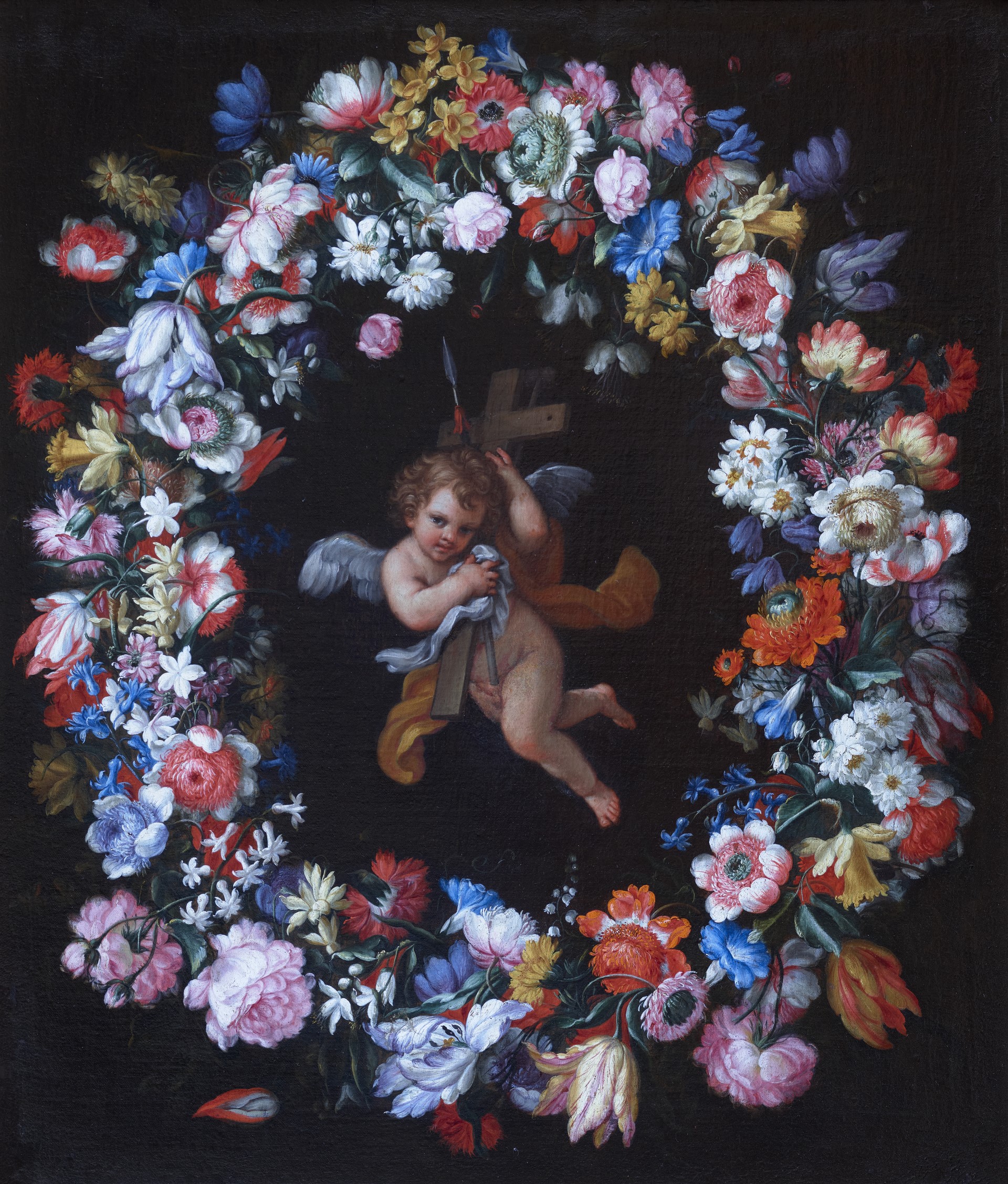In the last of the inventories prior to the dispersal of the collection of the Dukes of Medinaceli among the six sons of the 15th Duke, made in 1877, this canvas appears under the numbers 478 or 479, as it formed a pair with another of the same motif, both described as "...".A child in a border of flowers". An older inventory, dated 1756, is somewhat more precise: "...".two vases with a border of flowers, and in the centre Attributes of the Passion, of a scarce stick in a square, and their frames carved and gilded.".
Neither of these two inventories offers any attribution, but due to its quality and stylistic characteristics it has been attributed to Mario Nuzzi, a painter who lived in Rome between 1603 and 1673, who was known as Mario dei Fiori for his mastery of painting flowers, and who filled Roman palaces with his floral creations at a time when the taste for still lifes was spreading among the patrician families of Rome, This is why he is so well represented in the Museo del Prado and why four garlands with scenes from the Old Testament, one of them signed and dated 1650, are preserved in the Escorial monastery.
The origin of this iconography, which frames devotional motifs within garlands of flowers, is Flemish, but its dissemination in Italy derives from the success of still life in general and vase paintings in particular. In this respect, Nuzzi has a twofold inheritance: from his father, a florist and supplier to the great Roman gardens, and from his uncle Tommaso Salini, who is presumed to have introduced the subject of the flower vase with grotesques to Rome.
It is in a good state of conservation, with no problems other than some oxidised varnish that yellowed the paint. Once removed, the painting has regained the rich chromaticism that brought success to the painter to whom it is attributed.
Thanks to a photograph taken by the Junta Nacional de Incautación during the Civil War, we know that in 1936 it belonged to the Duke and Duchess of Almazán, which is why, in the testamentary division of the collection of the 15th Duke of Medinaceli, it was part of the lot awarded to the second of the daughters of the Duke and Duchess, María del Dulce Nombre Fernández de Córdoba y Pérez de Barradas, It was part of the lot awarded to the second of the daughters of this marriage, María del Dulce Nombre Fernández de Córdoba y Pérez de Barradas, married from 1876 to the 16th Duke of Híjar, a part of the Medinaceli collection which was divided again on his death in 1930 between his two surviving sons: the 17th Duke of Híjar and the 11th Duchess of Almazán. The first lot became part of the collection of his granddaughter, Cayetana Fitz-James Stuart y Silva, 18th Duchess of Alba, where it remains, while the second was dispersed.




